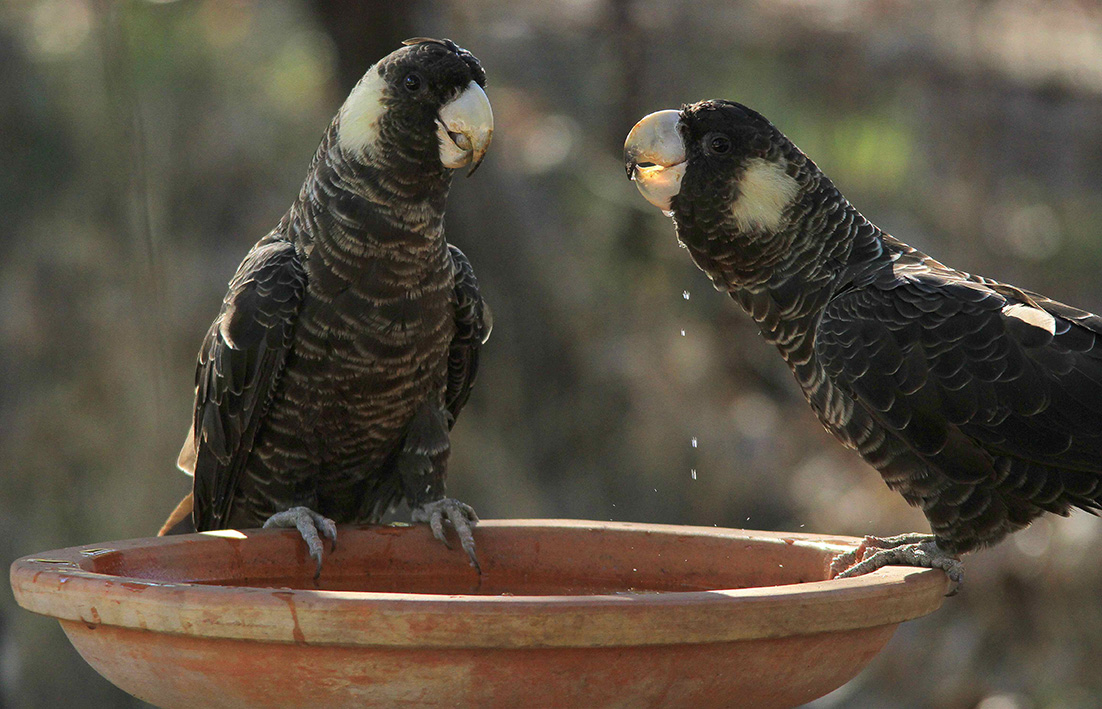
SOME of the trees burnt in the Wooroloo bushfire included some with hollows used by Carnaby’s black cockatoos, which take hundreds of years to form.
Environmental scientist Simon Cherriman said some of the cockatoo hollows that were lost were in trees that were at least 200-years-old but some of them were in 300 or 400-year-old trees that were completely lost and will never be replaced.
Mr Cherriman said a nesting box program undertaken after the Wooroloo bushfire, which burnt more than 10,000ha, was still a stopgap to try and offset some of the damage to the Carnaby’s nesting sites.
In 2021 Mr Cherriman with help from the Wundowie and Mundaring men’s sheds and other volunteers including some from the Darling Range Wildlife Shelter installed more than 200 nest-boxes on private land affected by the Wooroloo bushfire.
Of the 230 nesting boxes installed the majority were small ones for mammals but there were some larger sized ones that were suitable for cockatoos.
As none of the mamals had the endangered species listing attached to them that the Carnaby’s do he concentrated his effort on monitoring the cocky boxes, which was done with a pole camera.
“To monitor 230 nest-boxes would’ve taken many days of volunteer fieldwork, which was not possible,’’ he said.
“I tried to monitor as many of the 24 very large, top-entry nest boxes suitable for black cockatoos as possible.’’
In 2021 there were 22 boxes monitored with nine used by Carnaby’s cockatoos and five chicks fledged successfully.
Last year 19 boxes were monitored, 12 were used by Carnaby’s cockatoos and 10 chicks fledged successfully.
“Carnaby’s out of the three black cockatoos species will use artificial hollows very readily and particularly in the year of the fire birds were breeding in them – the fire was February, which is not the breeding season but there were birds breeding in them in August-September of that year,’’ he said.
“So whenever there is an instant uptake in the year the box has been installed it’s really successful.’’
He said the men’s sheds were amazing.
“Wundowie made 50 small boxes for mammals – for possums mostly and Mundaring I think made 100.
“The cockatoo boxes they were made by Willetton Senior High School students and teachers.
“I built them a demo box to show them how to make one and then they produced 20 like it.’’
Twenty nesting boxes were made by Mt Helena resident Arthur Rosenwald and some were made in workshops by other volunteers that contributed their time when he ran workshops to get people to build them.
A crowd funding goal raised just over $10,000 and with some private donations the total raised within a month after the fire was about $12,000 – that covered the materials and the installation, including the hire of a cherry picker.
He said Darling Range Wildlife Shelter volunteers contributed some of the funding and then supplied volunteers to help put them all up.
“They were make or break – without those volunteers it couldn’t have been done and obviously myself on weekends.
“I remember still being up a tree in a cherry picker in July when it was belting with rain thinking some people have a paid job to do this and I’m here volunteering and my partner was managing the children on her own but that was what we wanted to do because it was sorely needed (after) that terrible fire.’’